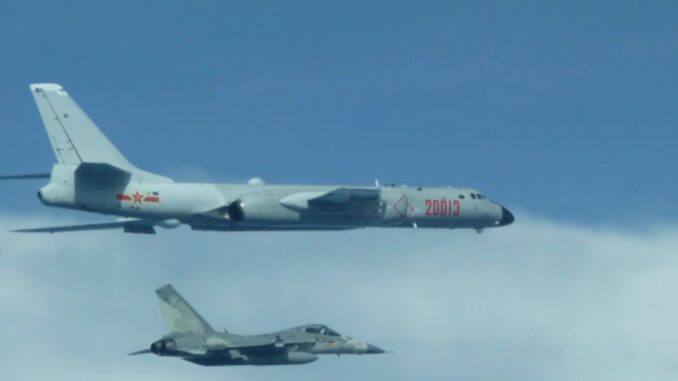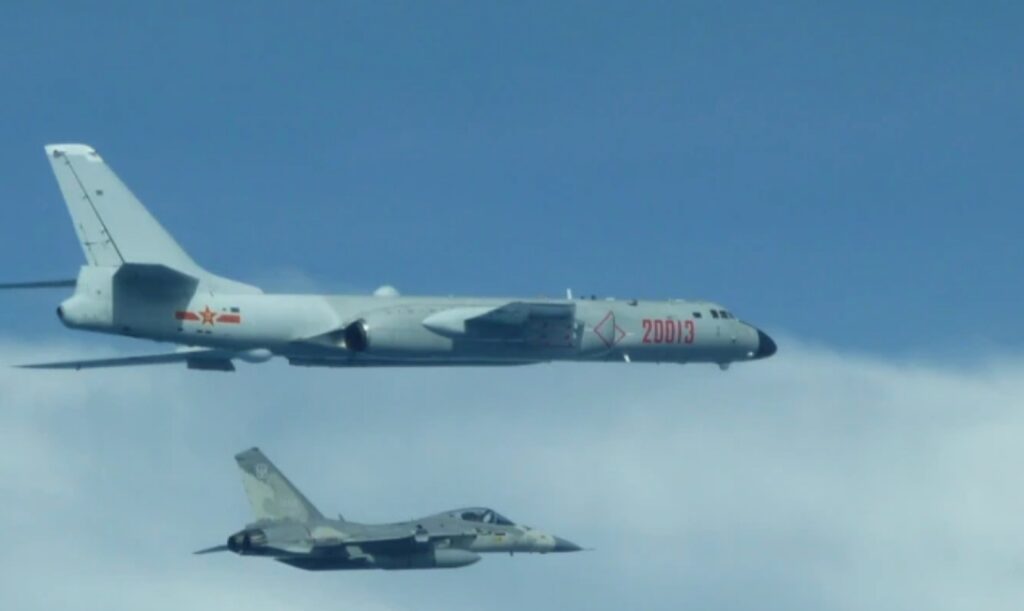
Analysis of Chinese air incursions into Taiwanese airspace and their implications for Asia-Pacific security.
Understand in 2 minutes:
Since September 2020, Chinese air incursions into Taiwan’s Air Defense Identification Zone (ADIZ) have tripled, from 972 in 2021 to 3,119 in 2022. These incursions, seen as a show of force and a strategy of military pressure, could be interpreted as war exercises, tests of new technologies or surveillance missions. Although the presence of the J-20 stealth fighter remains absent, these operations underline China’s rising military power and strategic intentions.
Since 2020, the People’s Republic of China has considerably stepped up its incursions into Taiwan’s Air Defense Identification Zone (ADIZ). In 2022, violations reached a record 3,119 incursions, compared with 972 in 2021. These actions are widely perceived as an attempt by China to put pressure on Taiwan and its international allies without triggering direct conflict. This article analyzes the reasons behind these incursions, their strategic implications, and the potential responses of Taiwan and its allies.
Objectives of the Chinese incursions
Chinese military incursions into Taiwan’s ADIZ have several objectives. Firstly, they serve as a show of force, designed to intimidate Taiwan and test the response capabilities of its armed forces. Secondly, they enable China to conduct surveillance and intelligence missions on Taiwanese and American military activities in the region. Finally, they provide a realistic training environment for Chinese pilots, in preparation for a possible conflict.
Numerical Analysis of Incursions
The figures speak for themselves: between 2021 and 2022, the number of incursions has more than tripled. This massive increase can be explained by several factors, including China’s improved air capabilities and its desire to demonstrate its military might. The types of aircraft involved range from fighters to surveillance aircraft, reflecting the diversity of missions carried out. By 2021, for example, there were 41 instances of Y-8 anti-submarine warfare aircraft flying alongside strike aircraft.
Advantages and disadvantages of incursions
These incursions present several advantages for China. They help maintain constant pressure on Taiwan, test military responses and gather valuable information. They also serve as practical training for Chinese pilots under near-real conditions. However, they do carry risks. They increase regional tensions and can lead to unforeseen incidents, such as collisions or errors of judgment that can result in escalation.
Absence of the J-20 fighter
A notable feature of the incursions is the absence of the J-20 stealth fighter. The latter, despite its advanced capabilities and locally-built WS-10 engine, was not observed in the Taiwanese ADIZ violations. This could be explained by China’s desire not to expose its advanced technologies to Taiwanese and American surveillance systems. What’s more, the J-20’s role seems more oriented towards specific missions, less compatible with the routine exercises carried out near Taiwan.

Strategic and political consequences
Chinese incursions into Taiwan’s ADIZ have major strategic and political consequences. They reinforce the perception of a growing threat from China, and justify increases in the defense budgets of Taiwan and its allies. For example, the United States has stepped up its military presence in the region and increased its arms sales to Taiwan, such as Patriot missile defense systems.
Reactions from the international community
China’s incursions have prompted reactions from the international community. The United States, in particular, has stepped up its support for Taiwan through arms sales and public statements affirming its commitment to the island’s defense. In addition, joint military exercises between the USA and its allies in the region aim to demonstrate their ability to respond rapidly and in a coordinated fashion in the event of conflict.
Extrapolation and the future of the conflict
In the future, Chinese incursions could continue, or even intensify, depending on political and military developments. China could incorporate new technologies, such as advanced drones or electronic warfare capabilities, to diversify its pressure strategies. For their part, Taiwan and its allies will have to continue developing their defense and surveillance capabilities to cope with this growing threat.
China’s repeated violations of Taiwanese airspace represent a major challenge to security in the Asia-Pacific region. These incursions are not only a show of force, but also a way for China to prepare its forces for an eventual conflict. The response of Taiwan and its allies, while robust, will need to continue to evolve to meet this persistent threat. The strategic and political stakes of these actions are immense, and future developments will be decisive for the stability of the region.
War Wings Daily is an independant magazine.